We arrive at Colombo International Airport at 5am, weary and a little tetchy after taking the red eye from Mumbai. After a long queue through immigration with a plane load of other grumpy travellers, we finally emerge into a breaking Sri Lankan dawn, and soon find ourselves in a hybrid taxi en route to central Colombo.
Wait, a hybrid taxi? We’re still on the Indian subcontinent, aren’t we? At first take, the streets are clean, there are no roaming cows and the traffic has some semblance of order – drivers are using lanes and some, including our driver, are using their indicators.
Same sub-continent (technically), but a world away from India it seems.
The first Sinhalese came to Sri Lanka from northern India in the 4th century BC. Legend has it they made landfall here on the exact day the Buddha attained enlightenment. Perhaps that explains it, for this beautiful, teardrop-shaped island does seem (to these slightly India-weary travellers at any rate) a touch more zen than its bursting-at-the-seams neighbour. A population of twenty million people versus a billion or so probably has something to do with it too.
Colombo has a nice post-colonial feel, some big old buildings and a very breezy waterfront, where Dan’s hair takes on a life of its own. Fortunately the wind (and hair) calms a bit as we enjoy a sunset beverage overlooking the Indian Ocean at the Chequerboard Bar in the impressive Galle Face Hotel . . . all in all a good start!
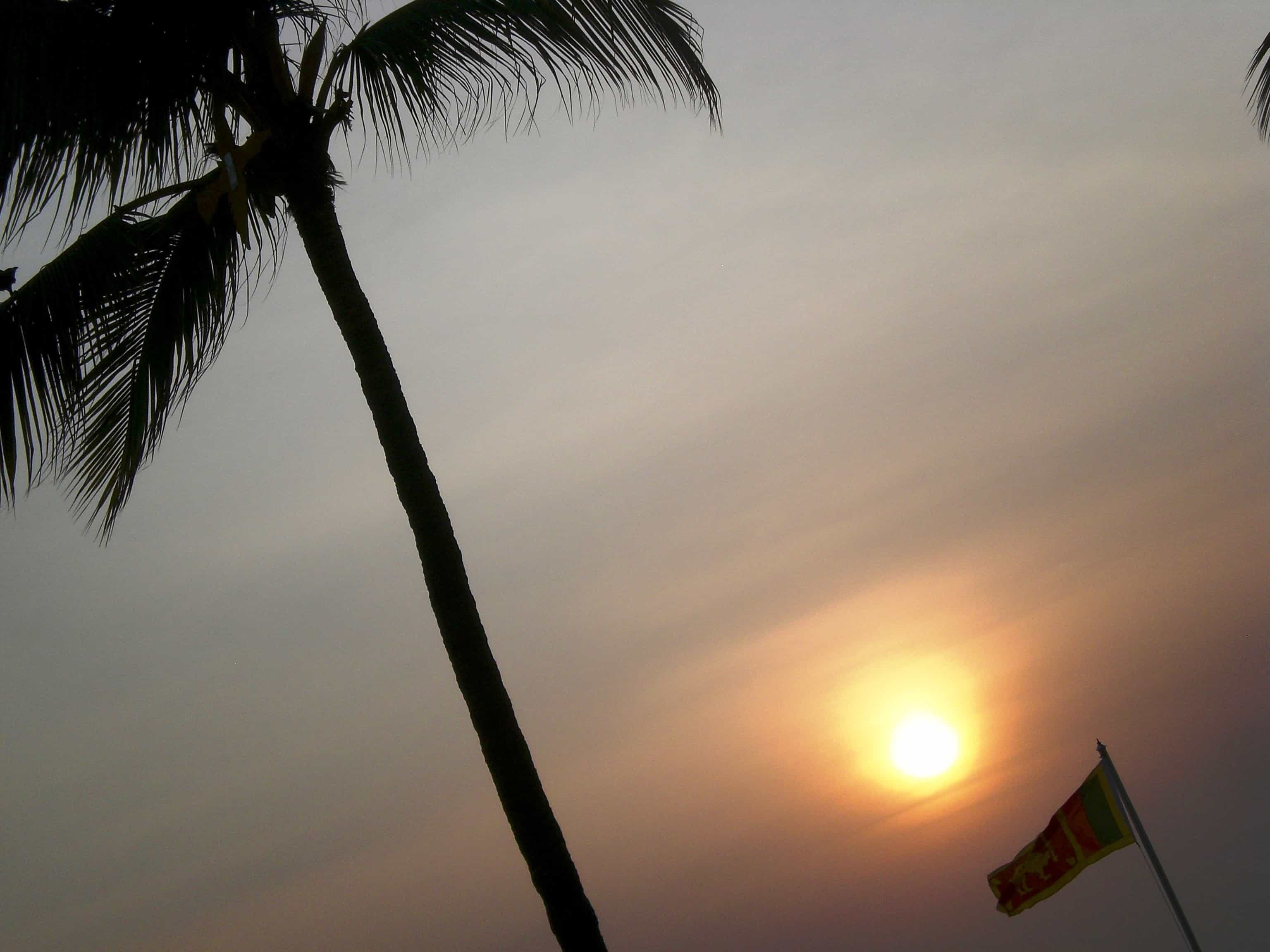
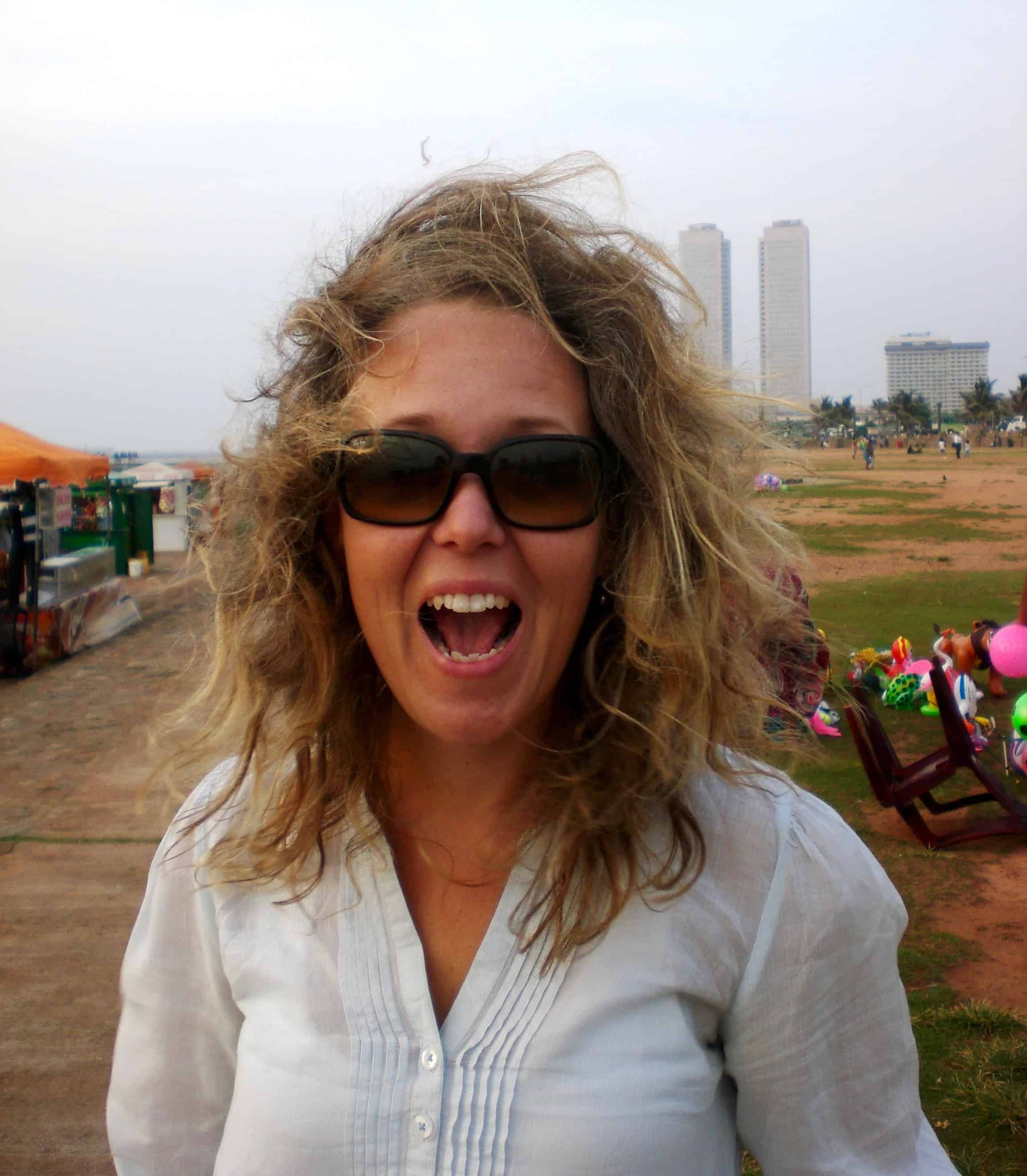
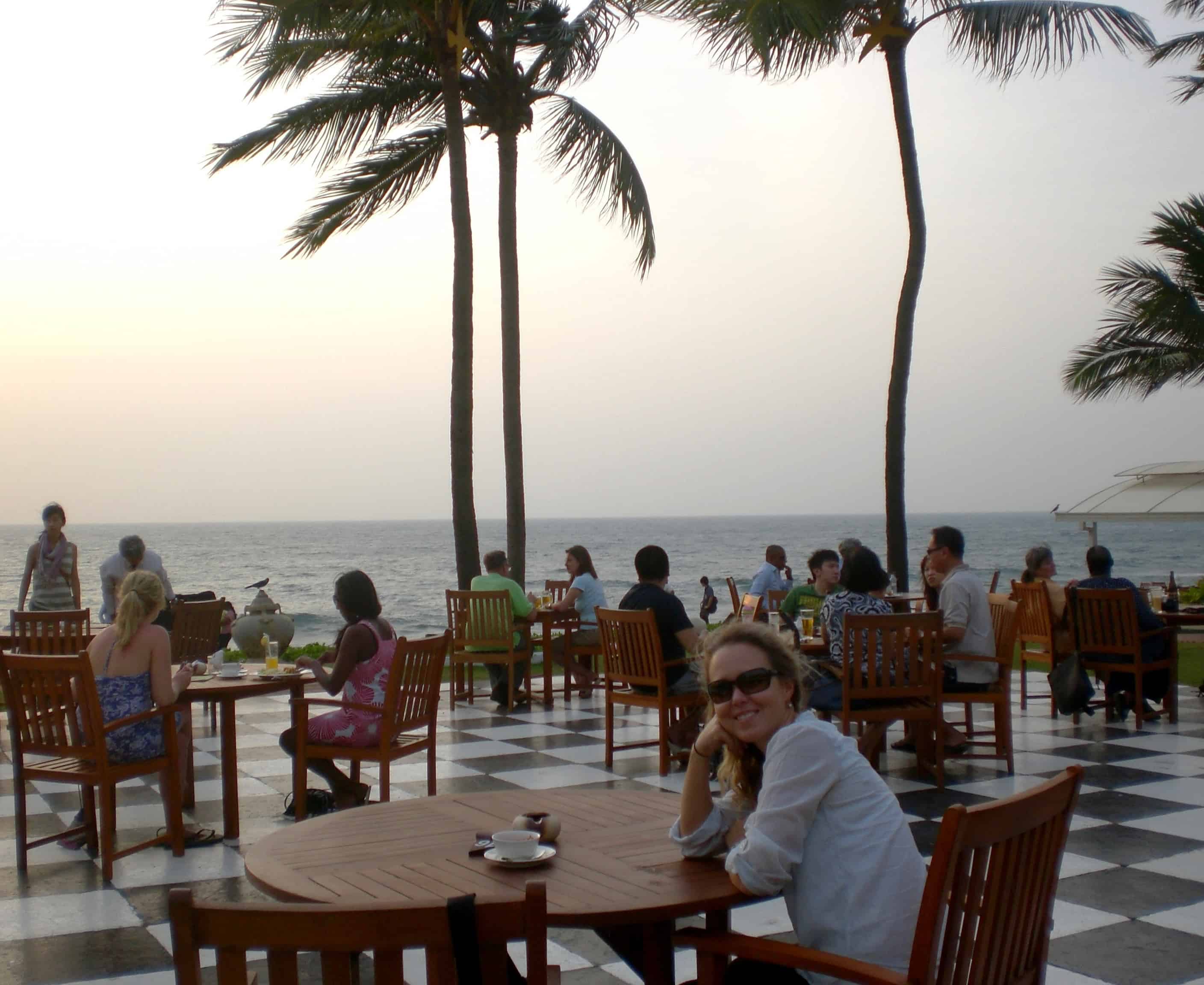
Dan seems to be finding Colombo a slightly hair-raising experience.
The next morning, just as the sun is rising, a comfortable second class train whisks us four hours north to Anuradhapura, in the ‘Cultural Triangle’ of north-central Sri Lanka. Famed for its ancient Sinhalese cities, it’s another World Heritage site for Dan’s collection (she insists she’s not a World Heritage nerd, we know better).
The seat of Sri Lankan power for a thousand years from 380BC, Anuradhapura boasts some of Sri Lanka’s oldest and largest dagobas (big, domed structures where relics are kept), as well as an abundance of temples, palaces, monasteries and water tanks. It also has the oldest historically authenticated tree in the world – the 2,000-year-old Sri Maha Bodhi, grown from a cutting of the original tree in Bodhgaya, under which the Buddha is said to have attained enlightenment.
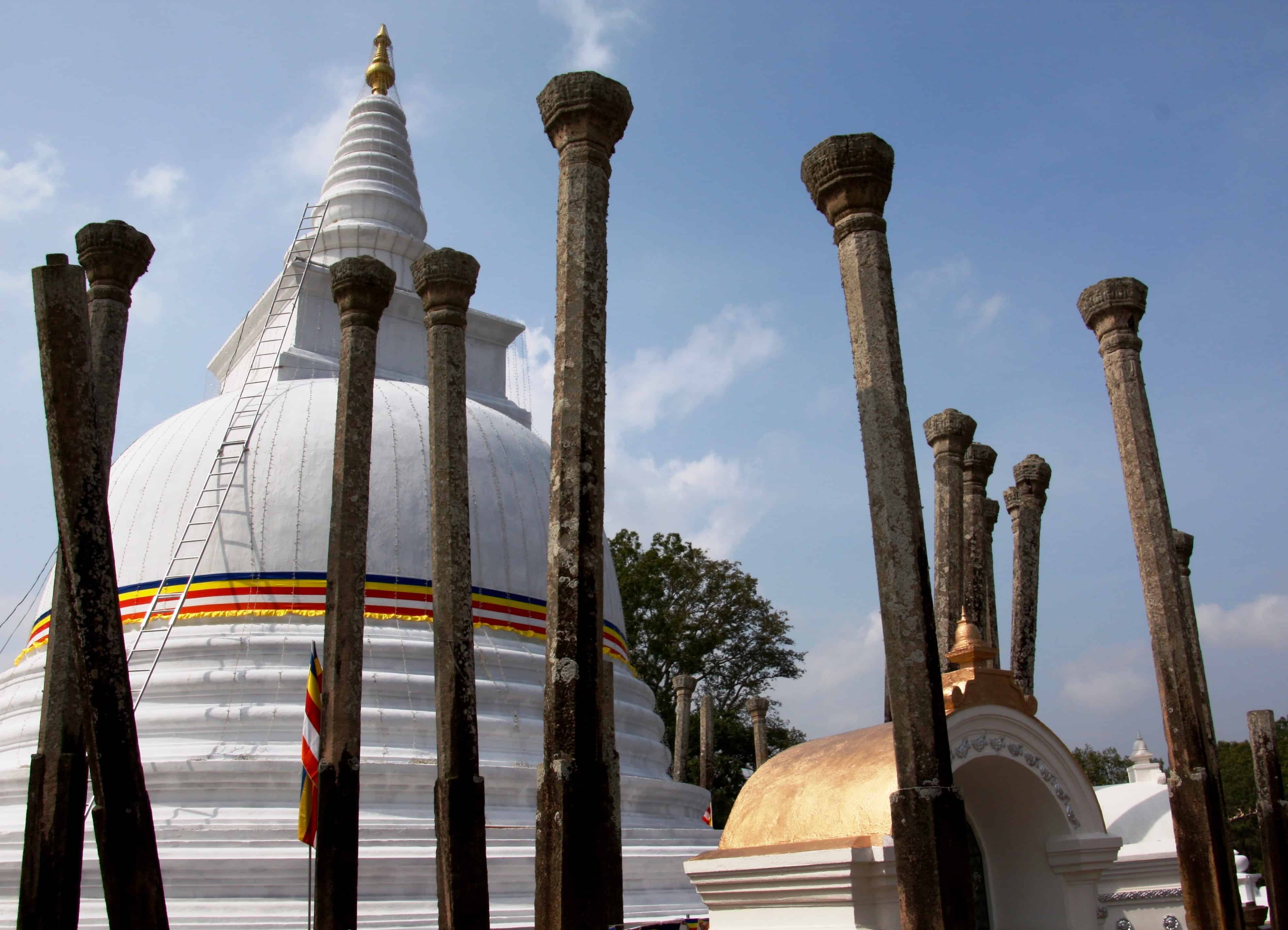
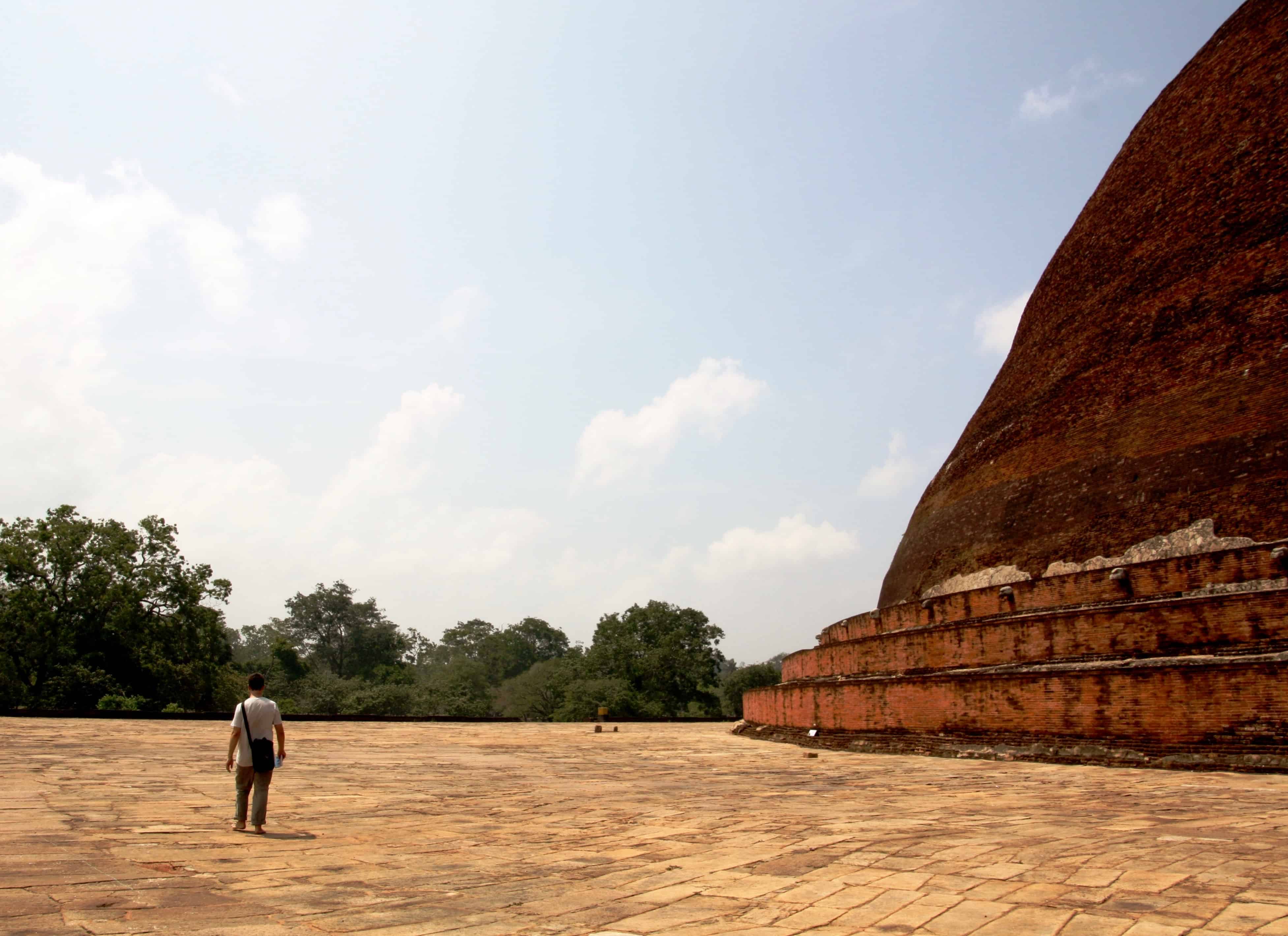
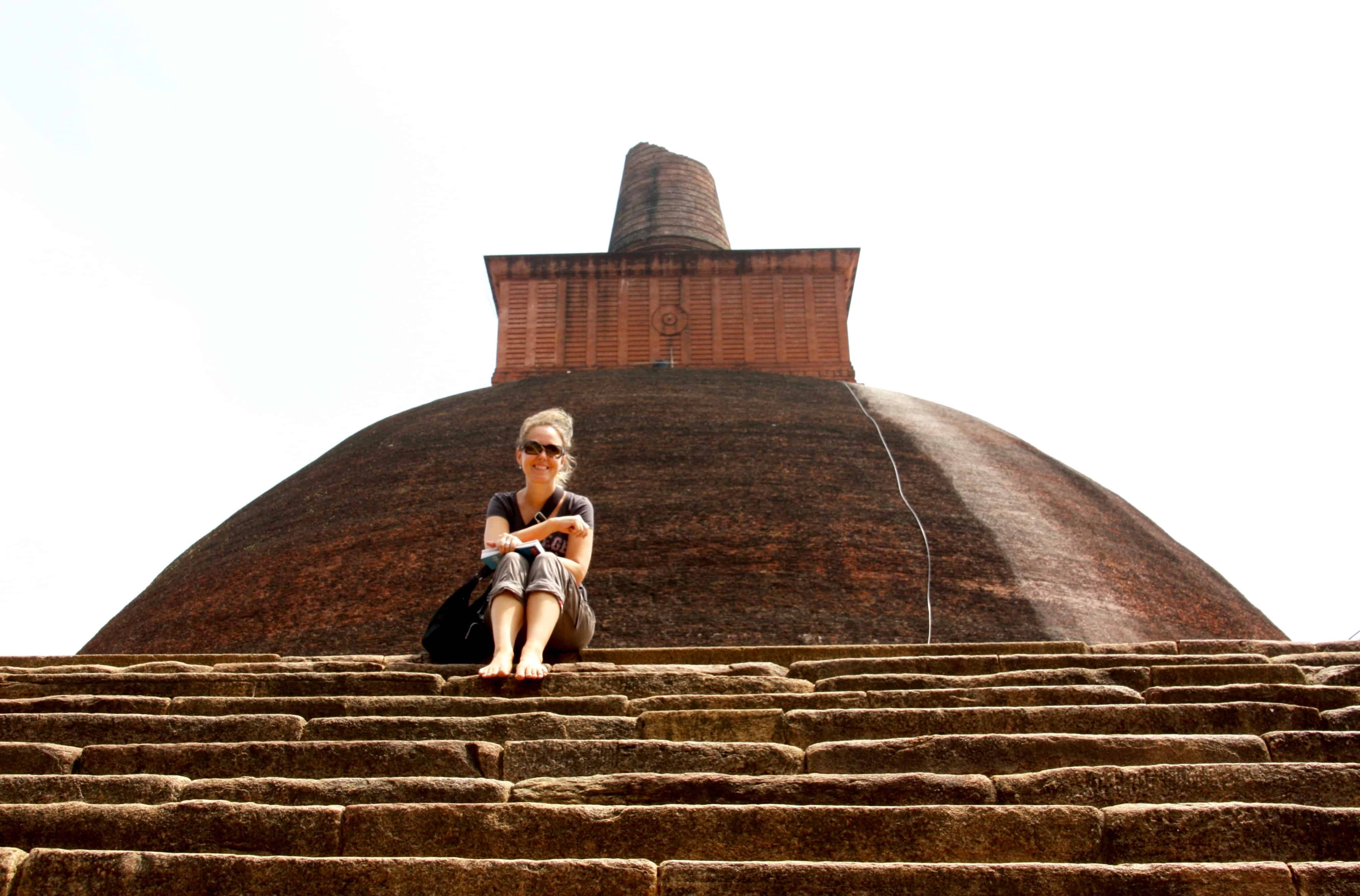
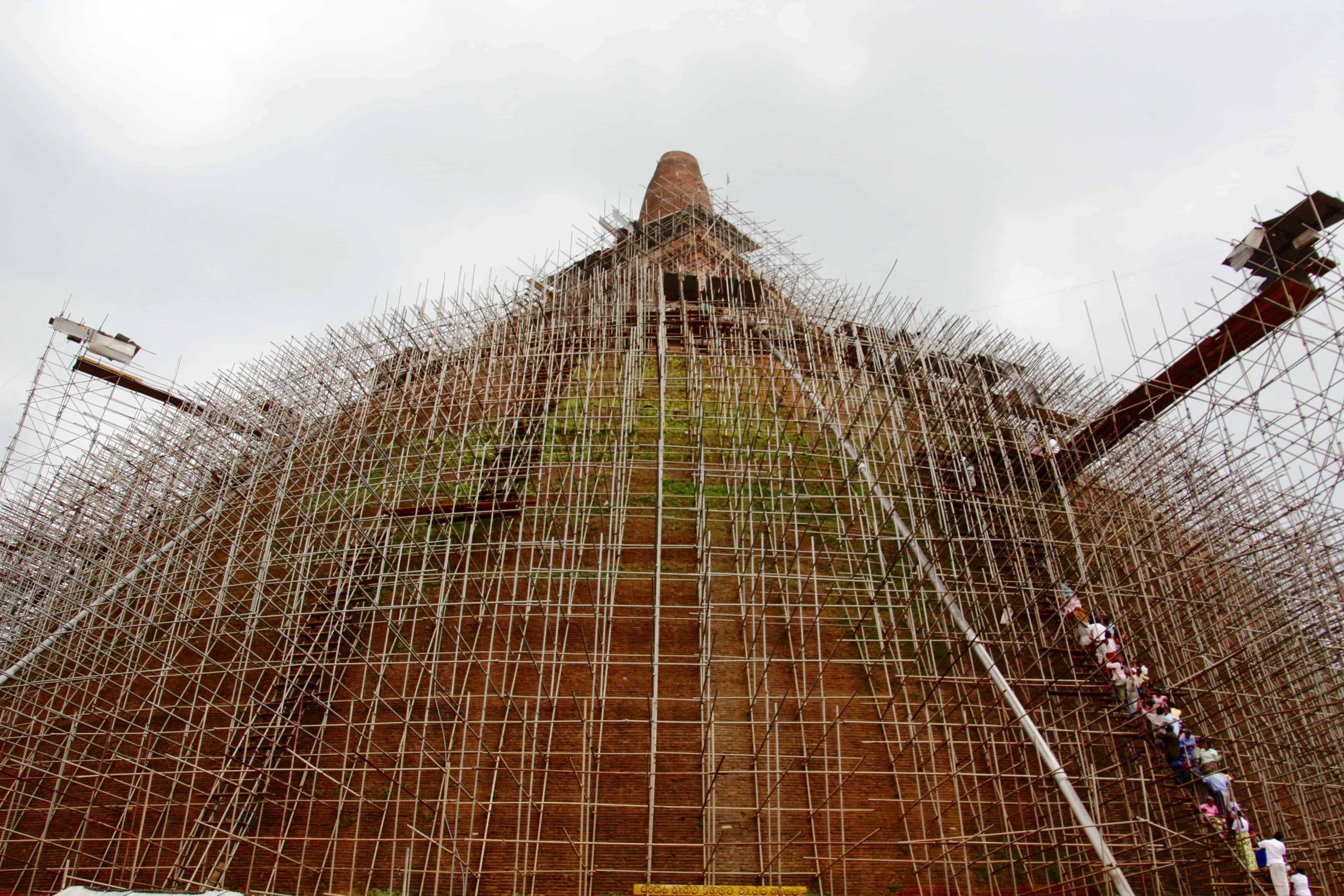
Temples of Anuradhapura (and some serious scaffolding on the Abhayagiri Temple).
After two months of intense immersion in India’s busy cities and culture, the peaceful villages and ancient sites of the Cultural Triangle, and its lush green tropical backdrop, prove the perfect tonic to resuscitate our overwhelmed cultural radars.
While we don’t make it to all points of the triangle, we do manage to see some of its most significant sites, including the impressive 12-metre high Aukana Buddha, the tallest ancient Buddha in the country.
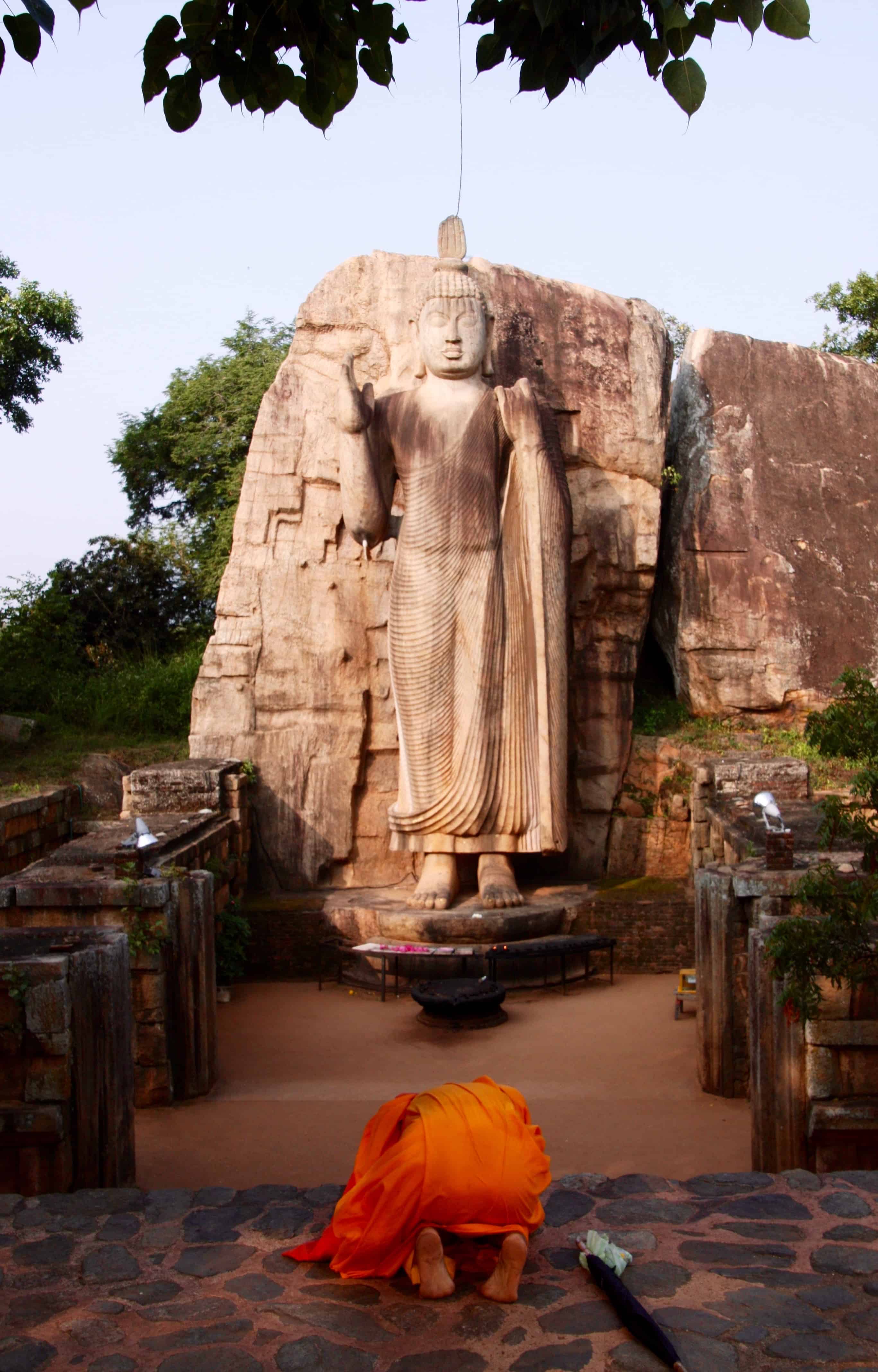
And the famous Golden Temple of Dambulla, a World Heritage cave temple complex dating back to the first century BC, filled with vivid Buddhist murals.
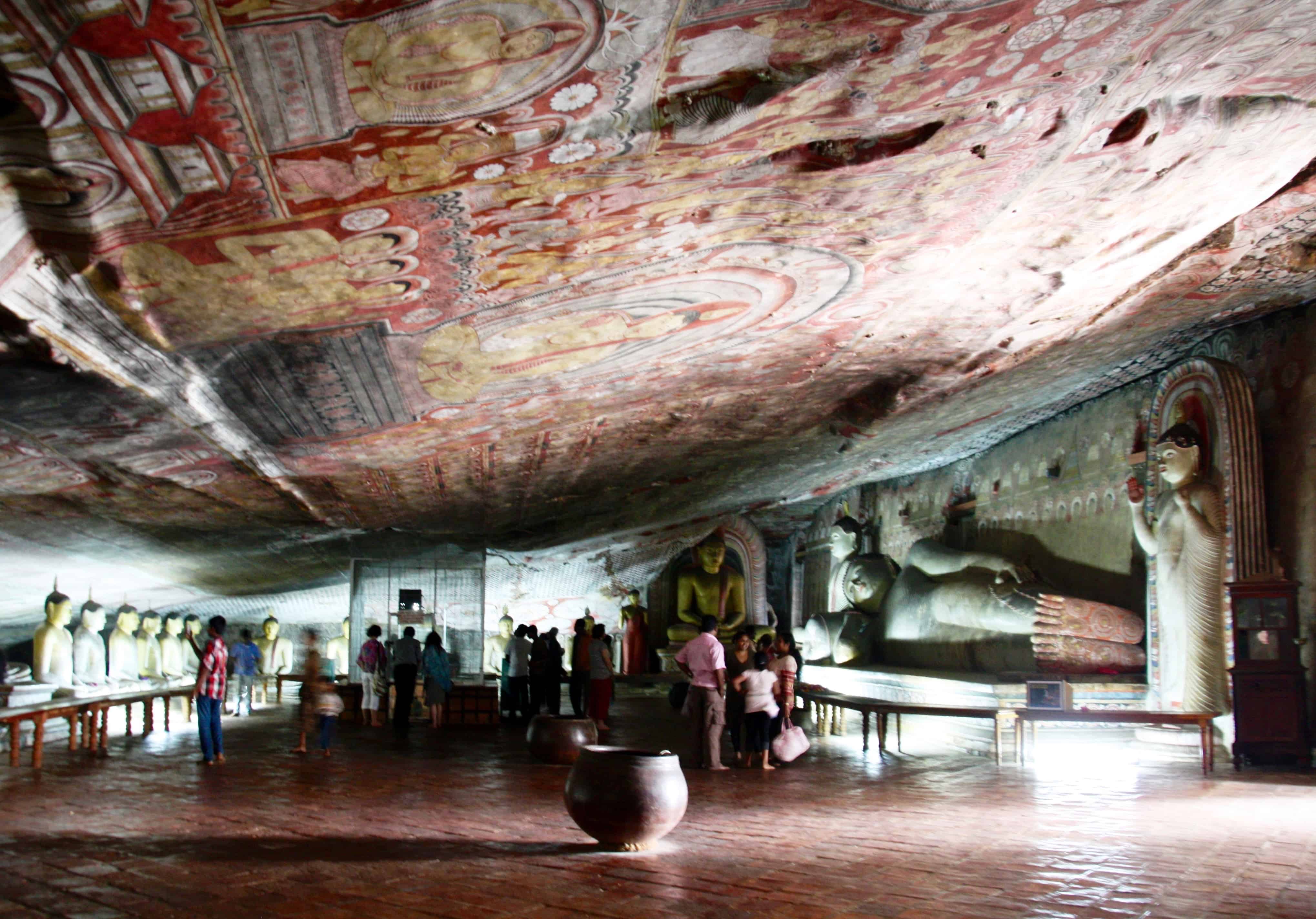
Following a serious hike up a million vertical steps, we also summit the amazing Sigiriya Rock, a place which – depending on whether you listen to the experts or the local legends – was once a palace/fort/monastic complex constructed anywhere between 100BC and 500AD, and occupied until its abandonment in the 14th century.
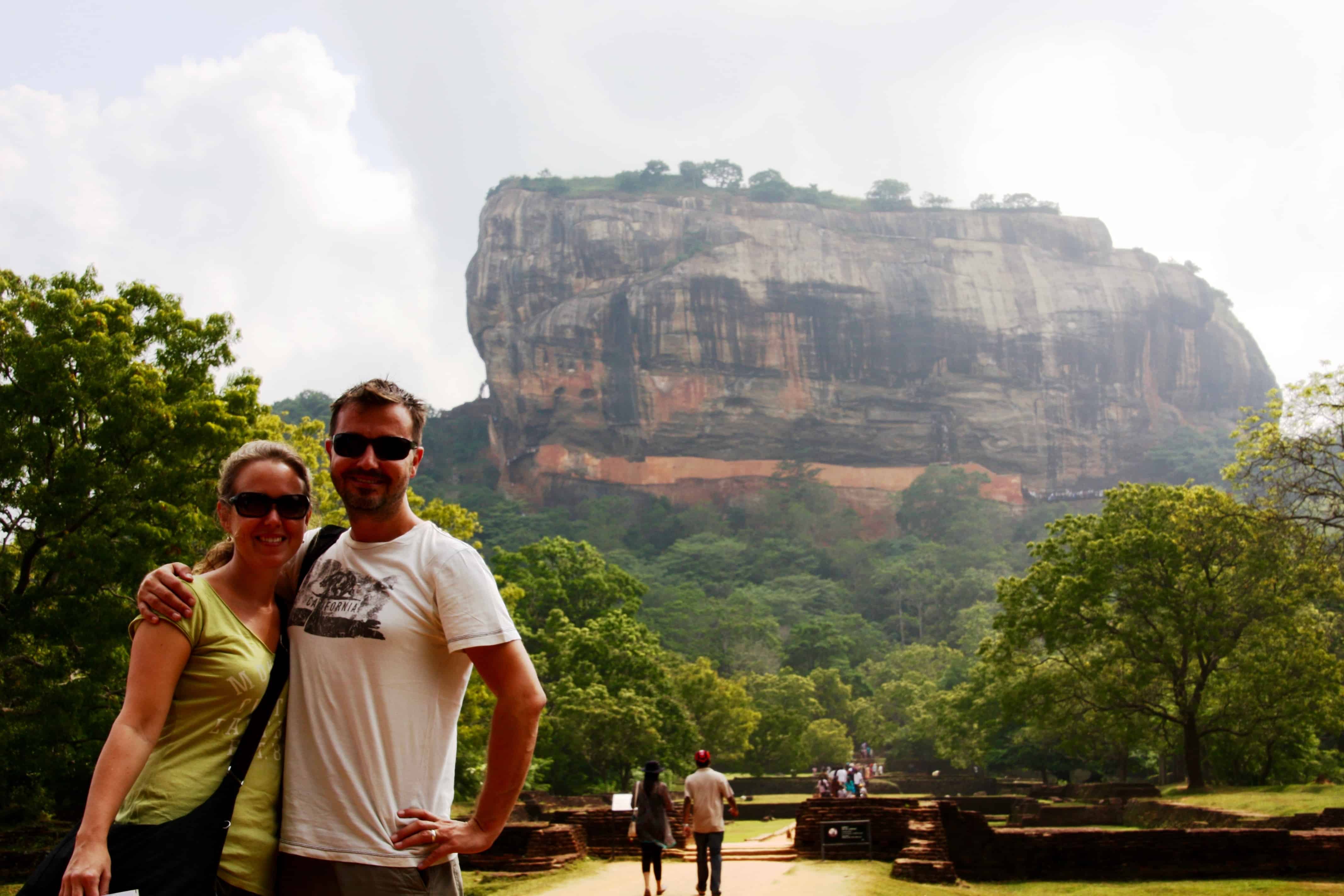
Still, despite the uncertainty about its origins and purpose, it’s not hard to see why Sigiriya is the poster child for Sri Lanka tourism. When you walk between the huge lion’s paws which serve as the entrance way to the final ascent, and climb to the top of the rock, the views are phenomenal.
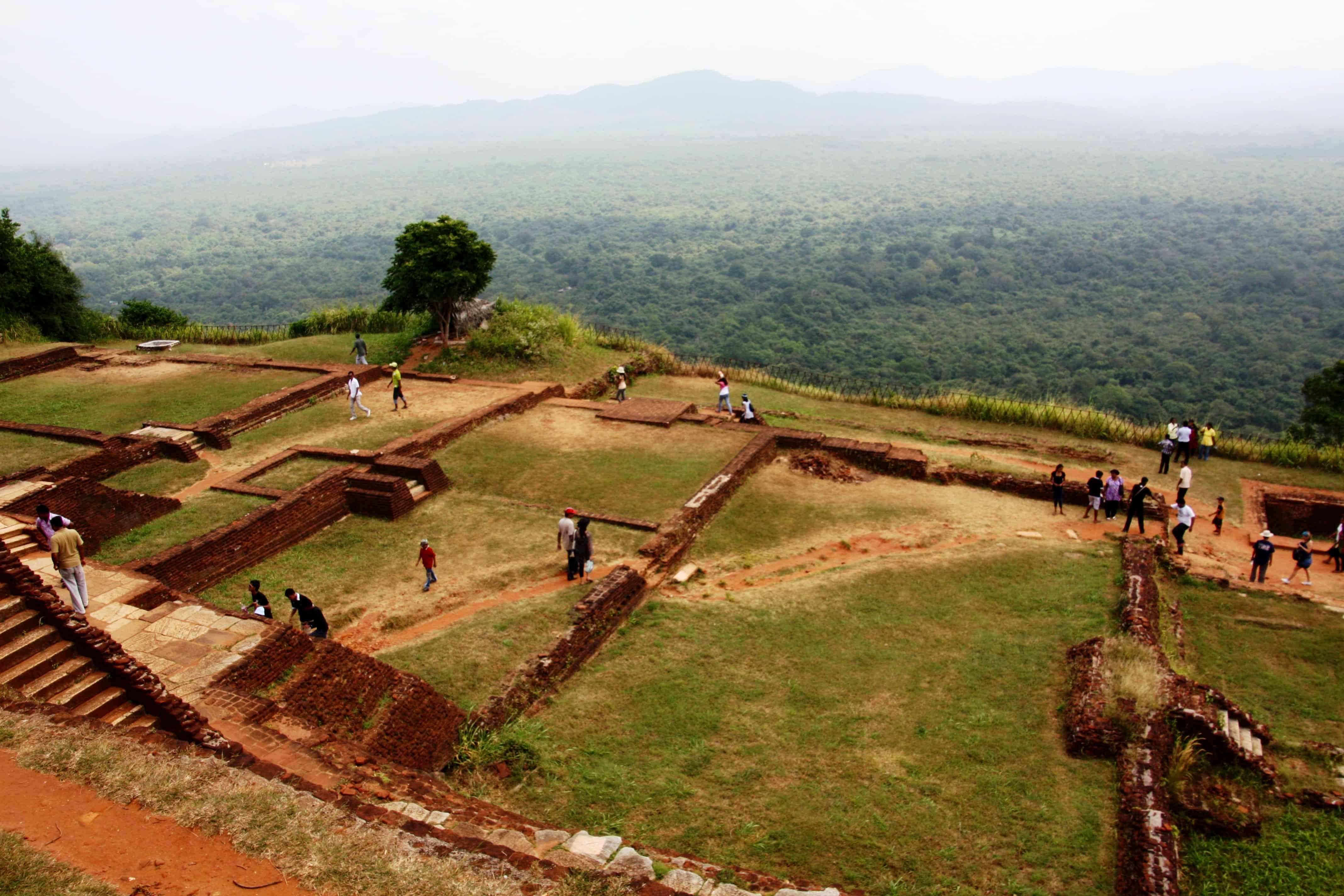
Our next stop is Kandy, gateway to the hill country and a pretty town that we cover in a couple of hours and dwell in probably a day too long, especially when we discover that day to be another ‘dry day’.
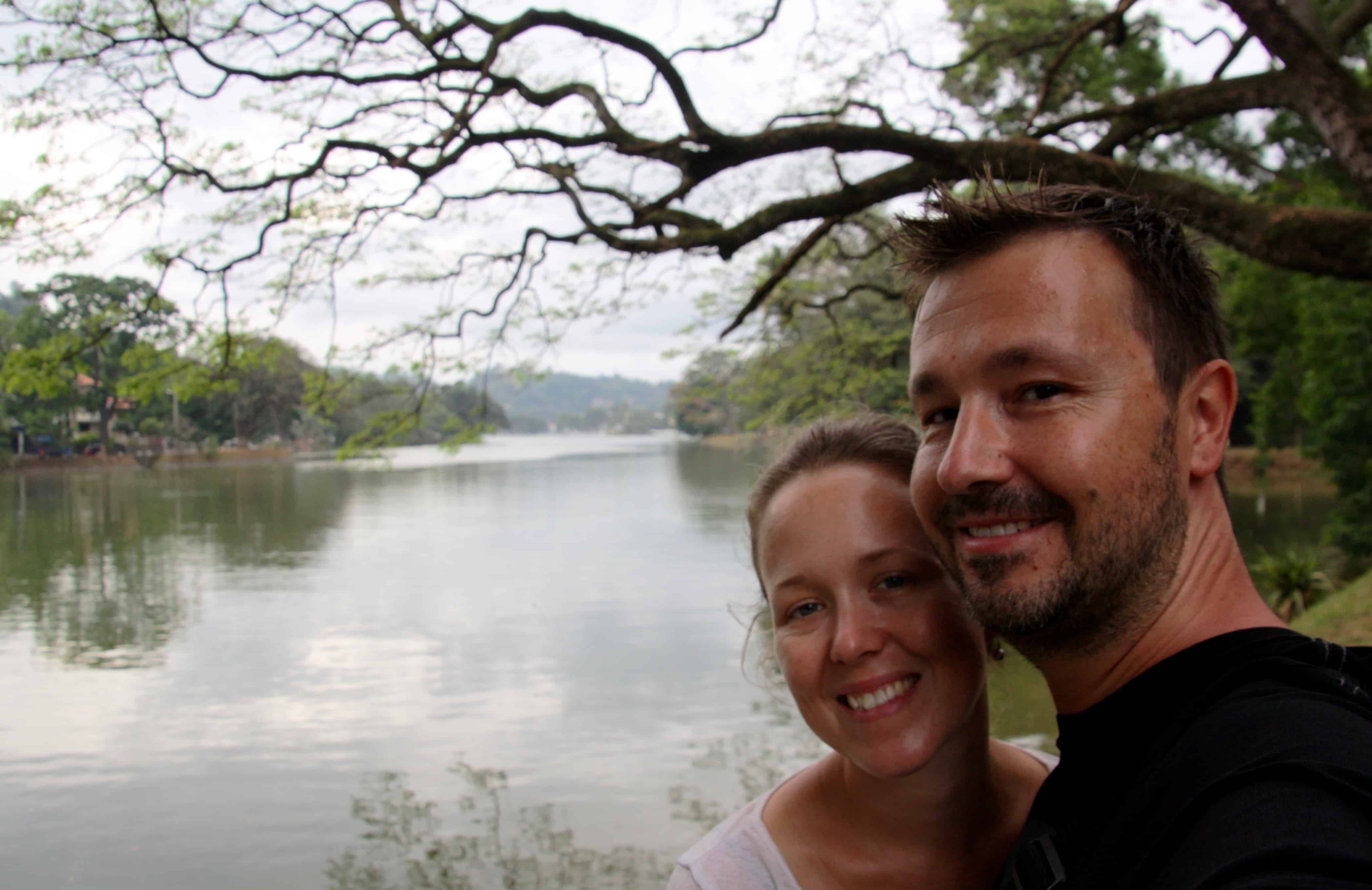
The ‘dry day’ is a mystery we’ve encountered in several countries on our travels: random, unannounced city-wide alcohol bans, sometimes for political reasons, sometimes for reasons unknown to us, but always – always! – on the days we turn up at the pub really feeling like a beer.
We do, however, visit the famous Temple of the Sacred Tooth where, despite claims the Portugese stole it and burnt it in the 16th century, a tooth allegedly taken from the Buddah’s funeral pyre is kept. We wrap up the visit with a night at the Kandyan Dance Performance, a display of traditional dances, drumming and fire walking that’s totally geared towards tourists but enjoyable all the same.
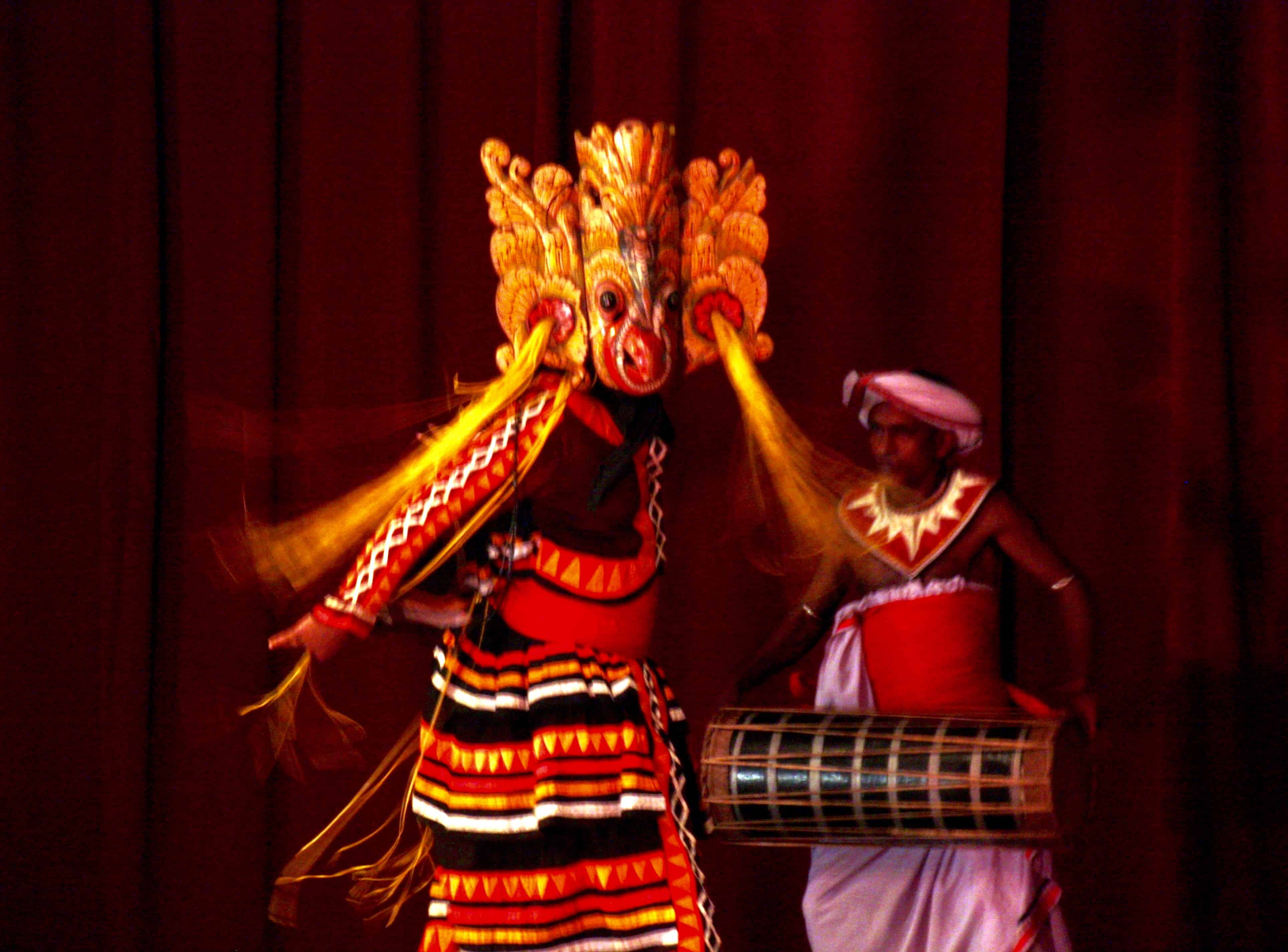
From Kandy we travel to the tiny tea town of Ella, and the train ride in many ways encapsulates the allure of Sri Lanka, meandering through lush, dramatic hillscapes, zipping over bridges and into tunnels (at which point, as in India, all the kids on the train break into hilarious howls and shrieks), past temples, small villages, and tea plantations to arrive in one of the most beautiful places we’ve ever been.
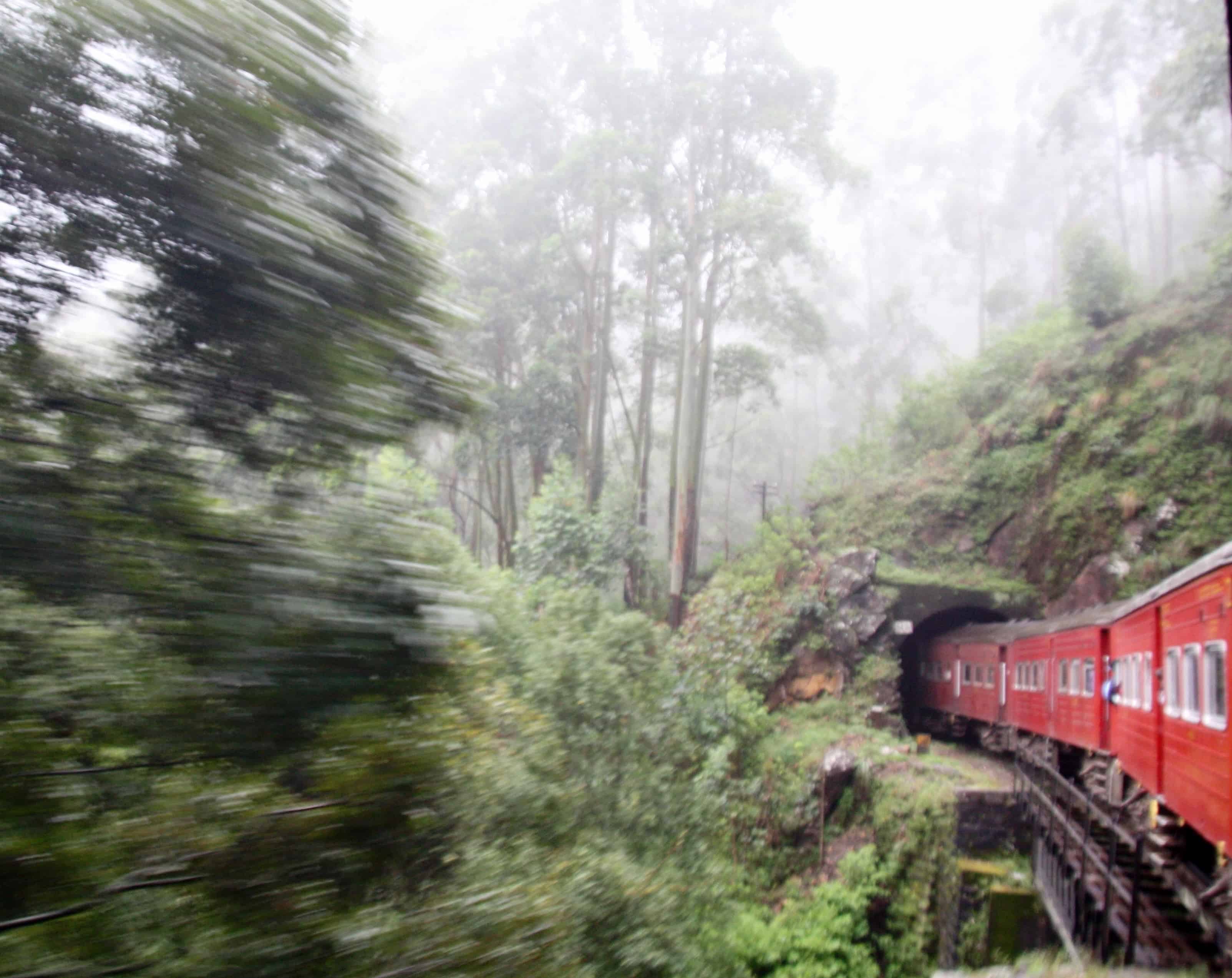
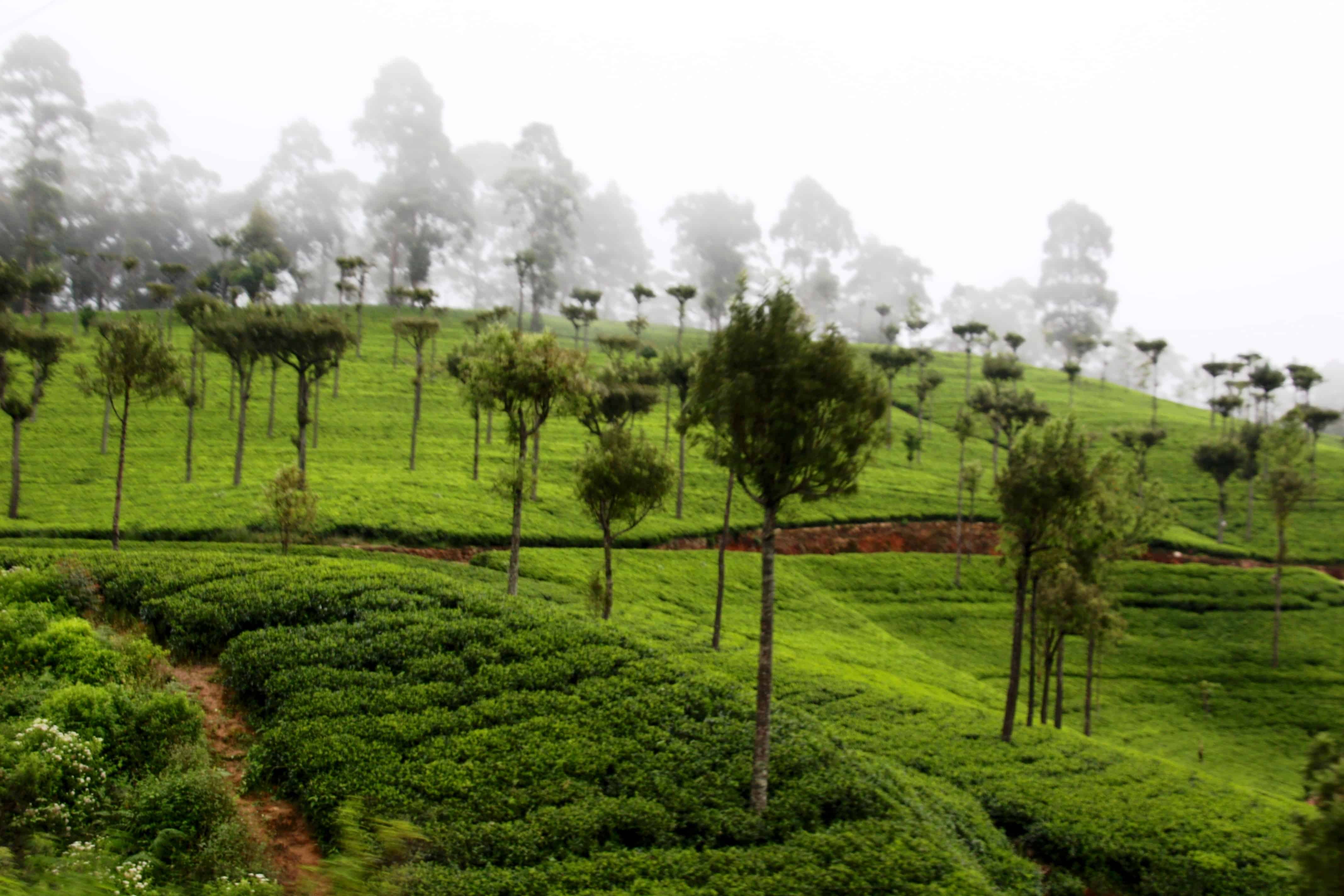
Train ride to tea country.
Sitting on our balcony looking out towards stunning Ella Gap, we’re once again reminded of how lucky we are to be on this amazing journey.
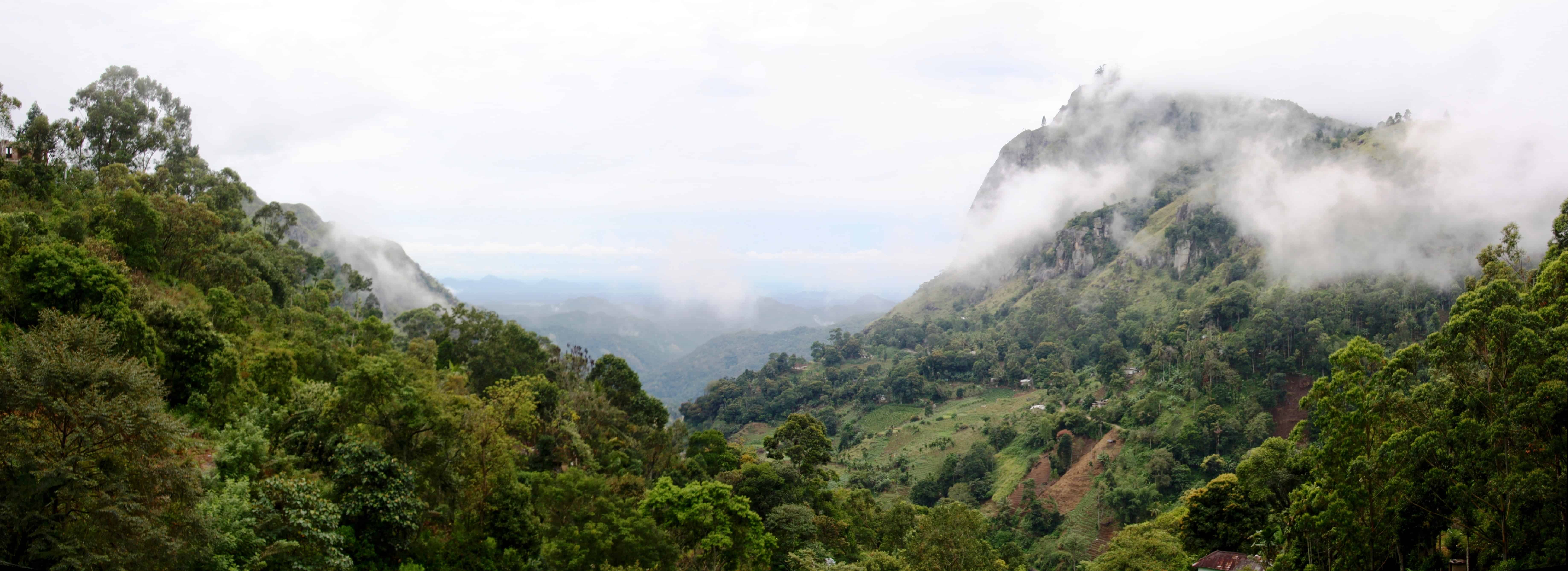
Ella is in the heart of the tea country, surrounded by mountains, waterfalls, and hundreds of plantations – so our itinerary pretty much decides itself: we visit a tea factory, hike through tea plantations and drink lots of tea.
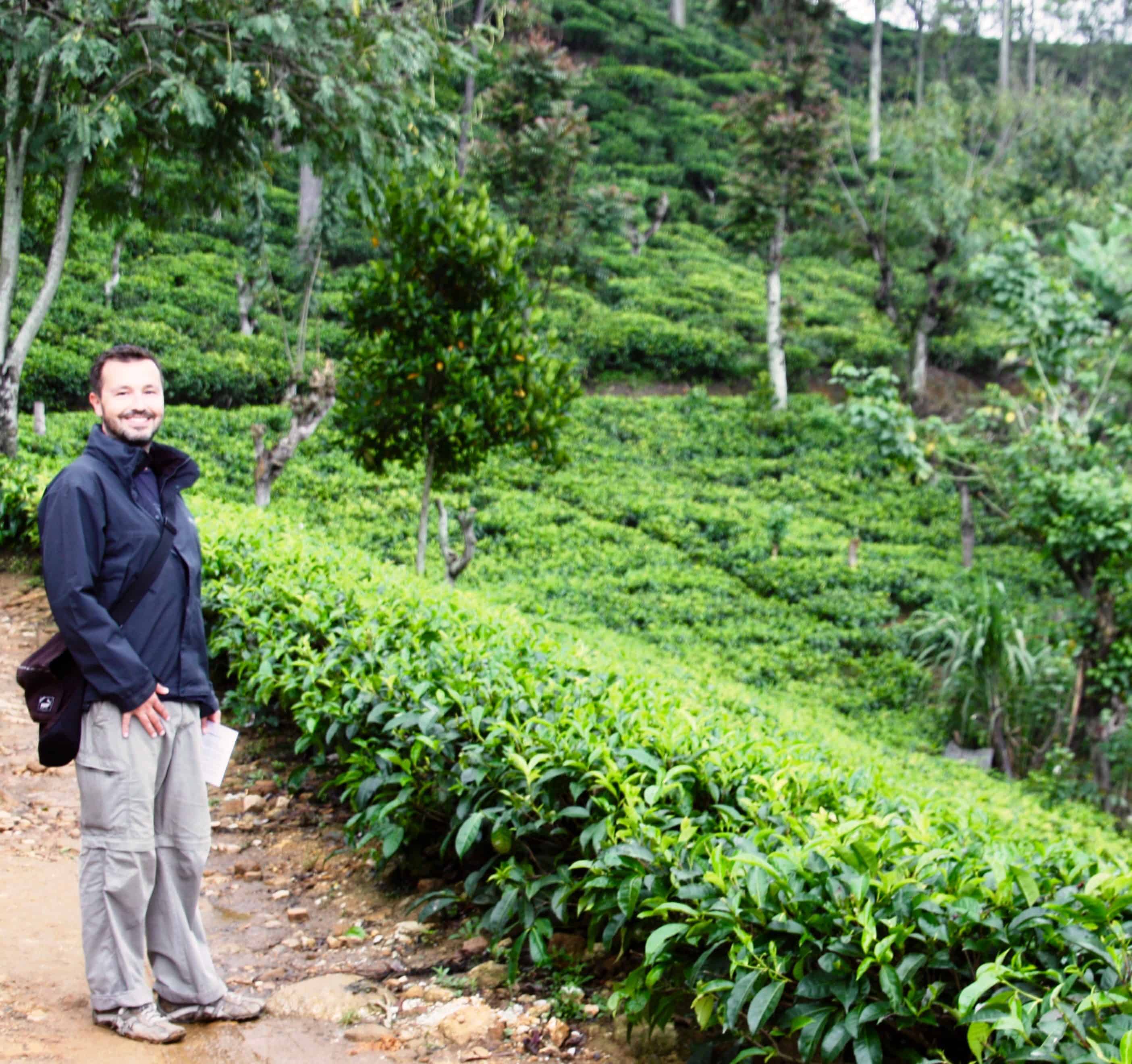
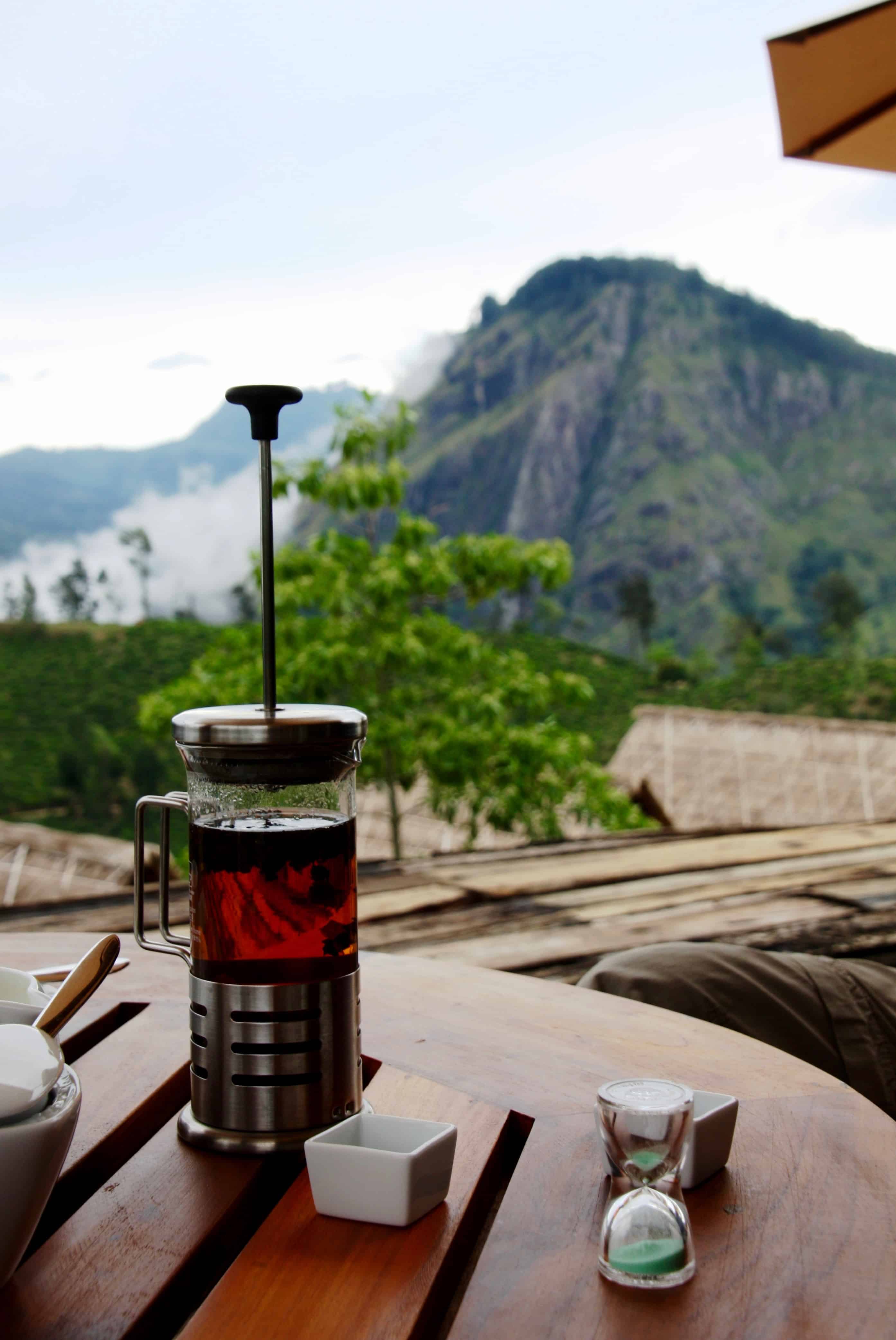
See tea, drink tea.
Our last week is a little more sedentary . . . .four days sunbathing and snorkelling at pretty Mirissa Beach on the south coast. Like many Sri Lankan villages, this beautiful corner of the country was destroyed by the Boxing Day tsunami in 2004, with many of its locals losing homes and loved ones. Its recovery is amazing and demonstrates the resilience and perseverance of the people here.
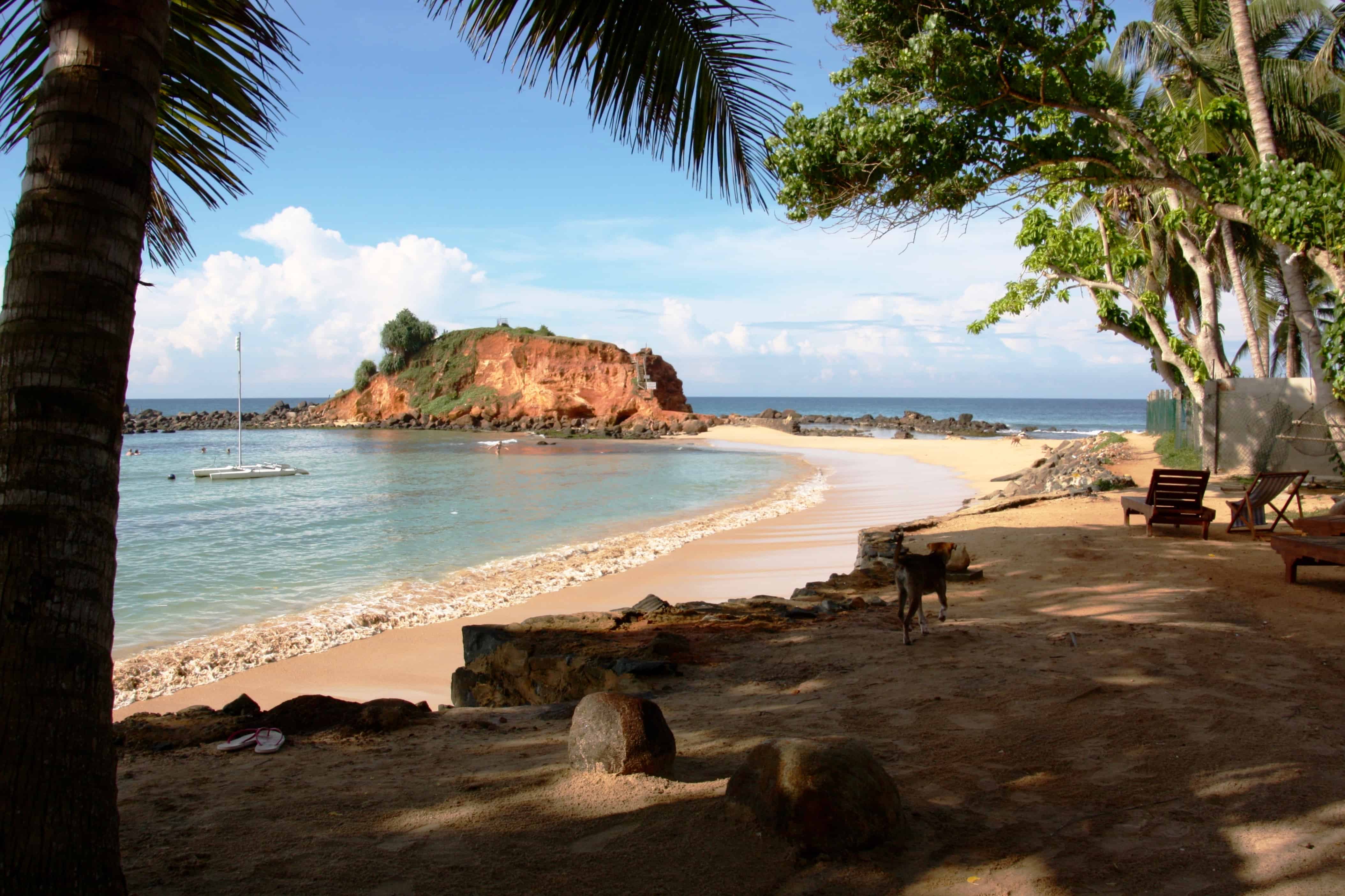
The sea off Mirissa is also a haven for blue whales, despite a dangerous, high traffic shipping corridor plowing right through it. We take on the choppy seas for a morning seeking out these majestic creatures with excellent local business Raja & the Whales, an amazing experience during which we are privileged to encounter several of the world’s largest – and shyest – creatures.
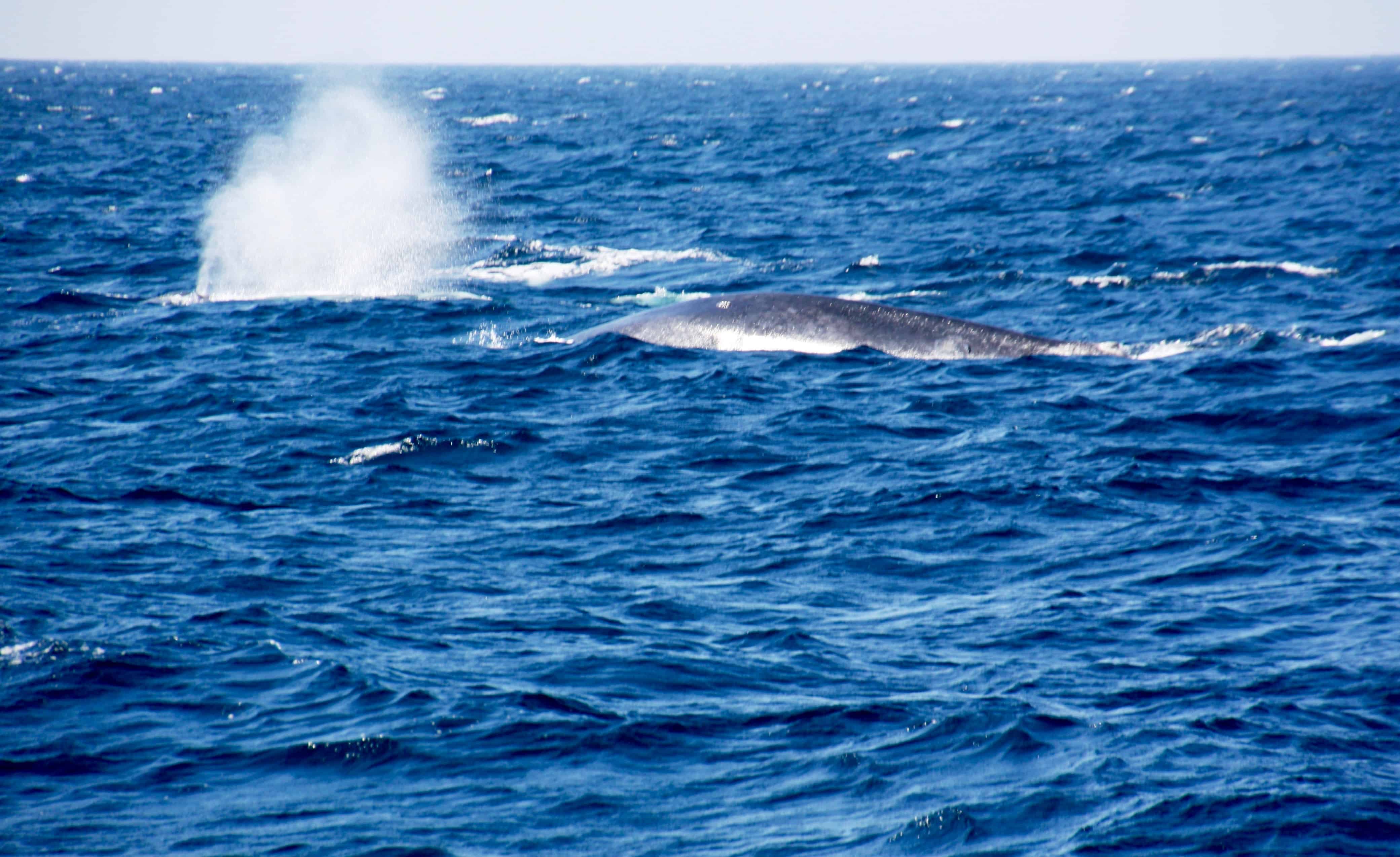
We follow this up with a short visit to the fort town of Galle, a charming little place with a nice Dutch colonial ambience (and where every second building is being restored as a posh guesthouse/café/restaurant/giftshop). We eat, relax, stroll the ramparts and reflect on how quickly our time in Sri Lanka has sped by.
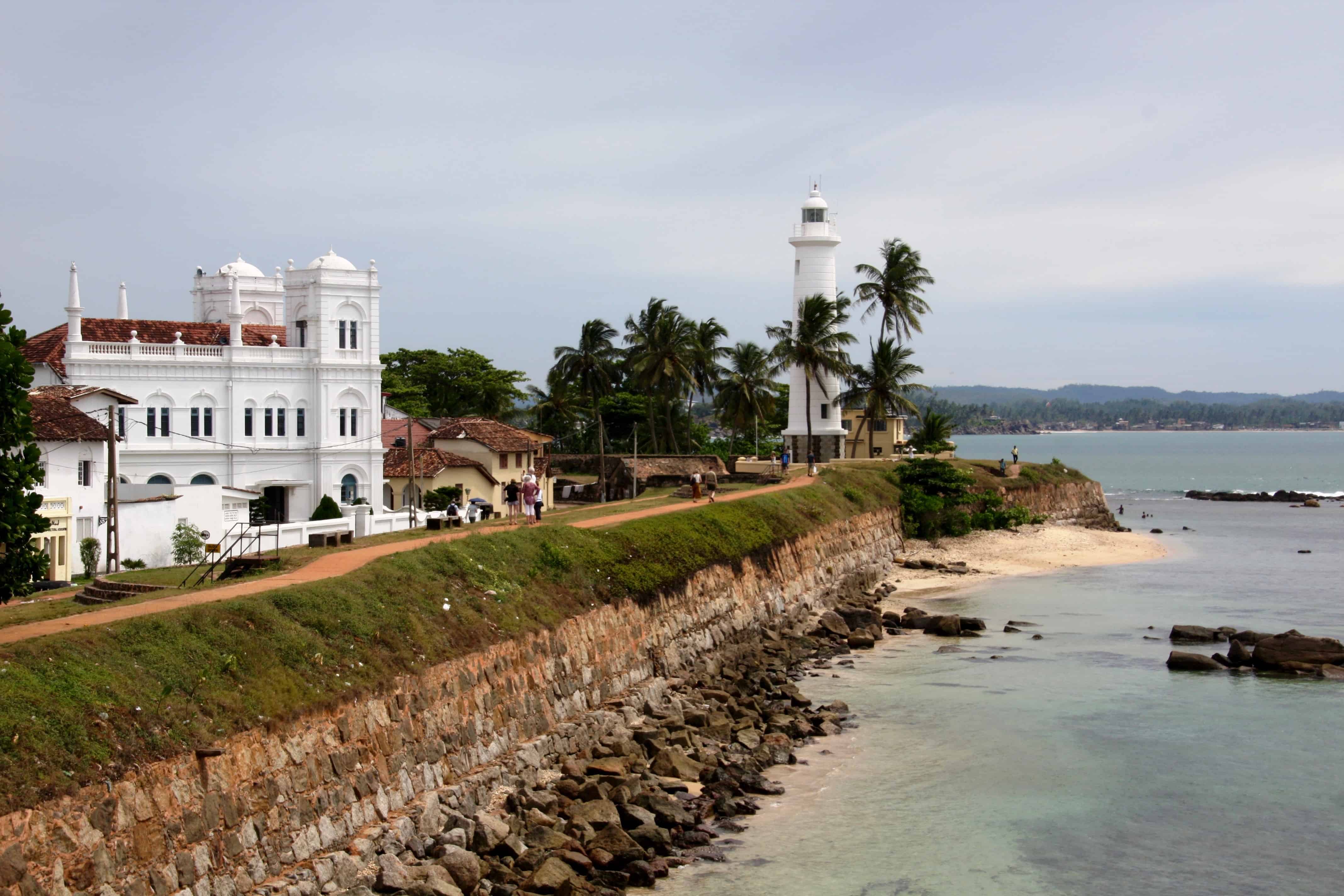
Dan’s birthday is spent mostly in the traffic of greater Colombo as we taxi from Galle to the beach town of Negombo, although we do arrive in time for the birthday girl to have a spa treatment at our swish hotel on the beach before relaxing for a few hours with killer views from our balcony. Our day of travel and celebration winds down with sunset drinks looking over the Indian Ocean followed by a tasty dinner (a touch of home with a delicious Aussie Angus for Dan) – all washed down with our first bottle of red in a very long time.
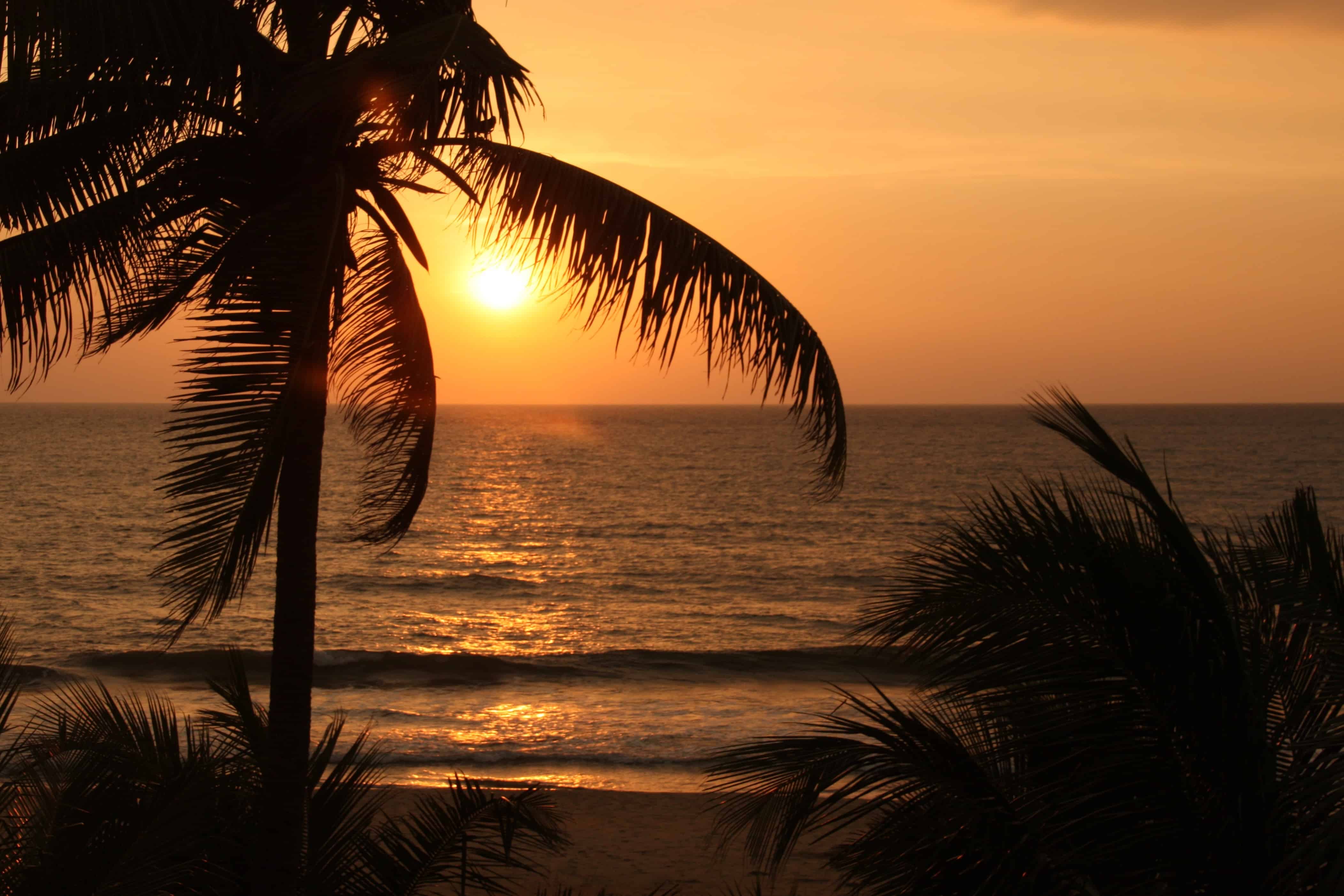
Our lasting thoughts of the emerald teardrop will be of lush green hills, friendly smiles, good food and a laid back, easy going attitude – a perfect finale to our subcontinental sortie.
Good to know
Getting there and around: Sri Lanka is easily reached by plane (there have been on-off discussions about ferry services between India and northern Sri Lanka for a while but this wasn’t in service when we visited). Train travel around the country is easy and low-cost. For those places that aren’t on the train network, it’s easy to organise a car and driver through your accommodation. We did this for our trip from Ella to Mirissa.
Our Sri Lanka circuit followed this route over 17 days (we stayed in each of these locations and travelled to the local sites from each by rickshaw or driver): Colombo > Anuradhapura > Aukana Buddha > Sigiriya > Dambulla > Kandy > Ella > Mirissa > Galle > Negombo > Colombo.
Tip: Do travel by train up into tea country. The train journey from Kandy to Nuwara Eliya and Ella is spectacular.
Tip: Do a Blue Whale watching trip with Raja & the Whales in Mirissa. We chose this local family business after reading positive reviews about their responsible approach to whale watching and once on the boat, we saw this in action. Captain Raja made sure our experience was an exciting and positive one that minimised stress to the whales.
For more pics from our trip, check out our: Scenes of Sri Lanka: Photo Gallery

You both certainly captured the essence of beautiful Sri Lanka😊 I see that you traveled in Feb 2012. Pre-COVID19!
Many travelers do not know that Sri Lanka has amazing sites, cultures, natural wonders, wild life (largest concentration of leopards and the most friendly people in the world.
I’m from SL and always try to educate people I meet living in the USA. Most have never heard of SL or they say “it’s part of India “!!
Thanks for sharing your experience.
A grateful Sri Lankan🙂
Hi Varini, thanks so much for your kind comment.
We often talk about this trip and our desire to get back to Sri Lanka (post-COVID) and take our time to travel a little slower, and see much more of this wonderful country.
It’s certainly a very different experience form travelling in India, and we very much enjoyed the cultural and gastronomical differences 🙂
Hope we don’t have to wait too long to get back there, although I fear it seems unlikely in 2021.
Take care.
John